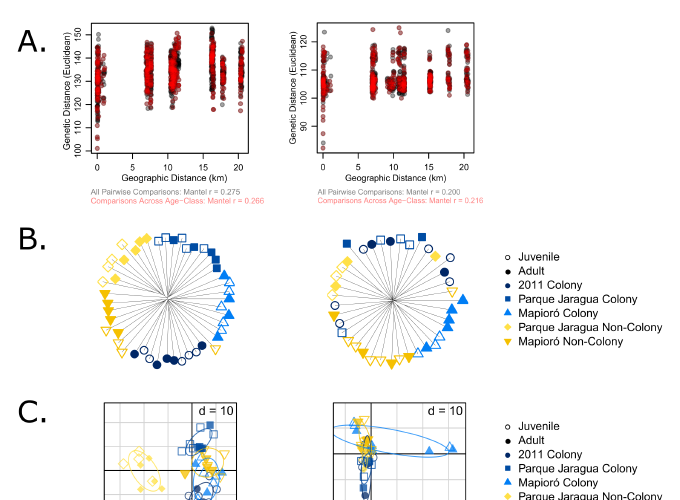
The influence of a colonial frugivore on genetic diversity of two tropical trees
Abstract
Animal seed dispersers may influence plant genetic diversity, though there are few examples linking disperser behavior to population genomic diversity. We hypothesized that breeding colonies of the frugivorous White-Crowned Pigeon (Patagioenas leucocephala) would increase population diversity and decrease population differentiation in fruit trees at nesting sites due to increased seed dispersal from foraging trips. We measured the density and extent of colonies at Parque Nacional Jaragua (Dominican Republic) and used nuclear and plastid SNPs from ddRADseq to examine the spatial genetic structure of two common species: poisonwood (Metopium toxiferum), a key fruit resource during the breeding season, and gumbo limbo (Bursera simaruba). We found that pigeon nesting aggregations in and around Parque Nacional Jaragua occupy areas between 3 and 5 Km2, with an estimated number of active nests for 2016 extrapolated to 3 km2 of 159,144 21,484 s.e., making this one of the largest breeding aggregations for the species across its range. However, colony locations did not determine tree genetic diversity and differentiation. Gumbo limbo (consumed by a diverse community) showed less isolation by distance than poisonwood. Saplings and plastid markers, expected to be more strongly influenced by seed dispersal, did not display geographic structure associated with colony sites, suggesting that patterns were not primarily due to pigeon foraging. Our results highlight the diversity of population genomic patterns among co-occurring species with similar ecological niches and demonstrate the limitations for frugivores to influence genetic differences among plant species.
